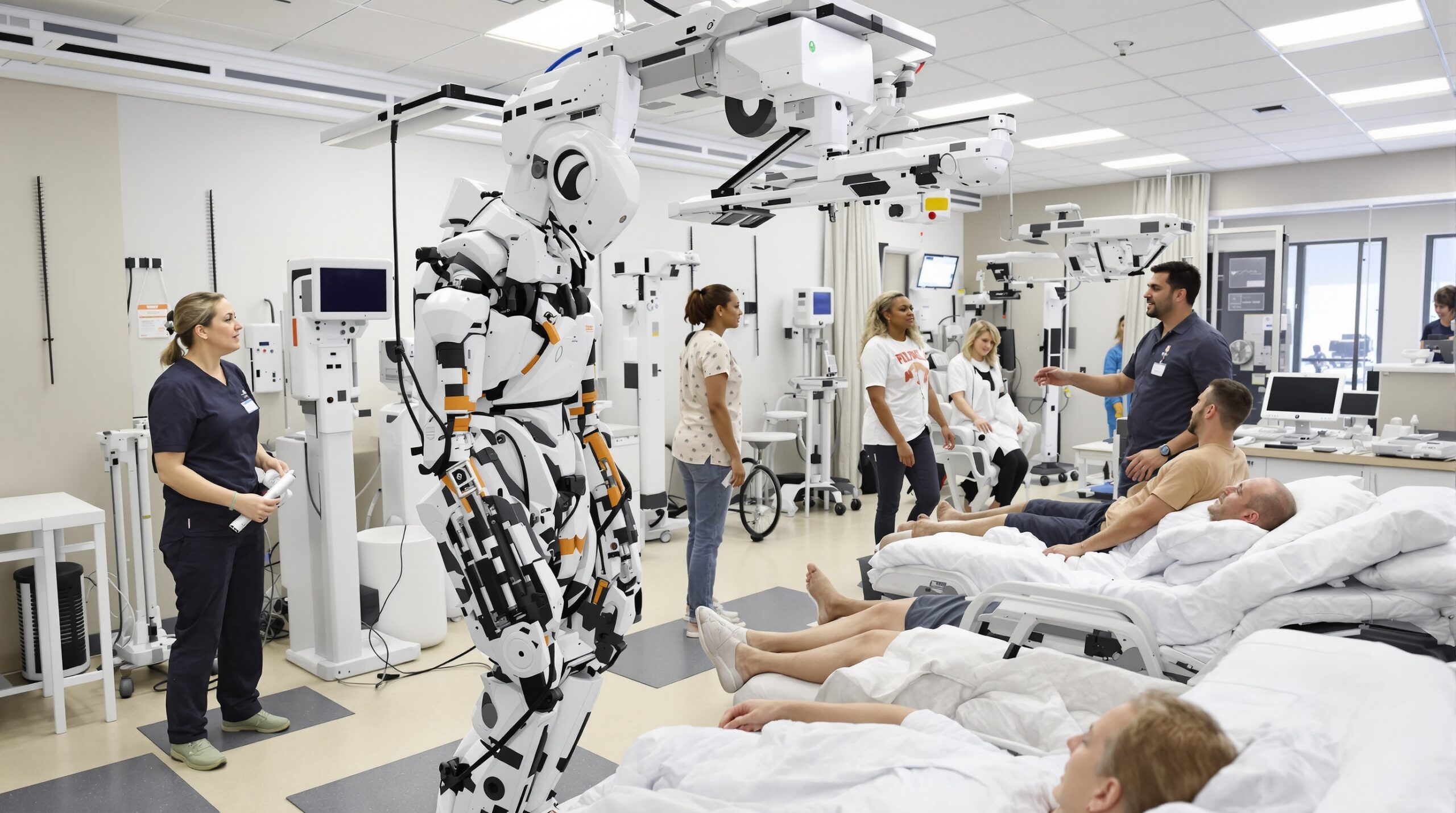Stroke survivors often struggle with persistent mobility challenges that affect their quality of life. Physical rehabilitation remains essential to restore movement and independence. However, traditional therapy methods sometimes fall short in providing the intensity and precision needed to achieve optimal recoveries. The development of robotic exoskeletons is reshaping this landscape, offering advanced support and motivation for stroke survivors during rehabilitation.
Understanding Stroke and Its Impact on Mobility
A stroke disrupts blood flow to the brain, damaging cells that control movement and coordination. As a result, many survivors face muscle weakness or paralysis, particularly on one side of the body. Regaining lost mobility requires consistent, targeted rehabilitation exercises. Unfortunately, fatigue, lack of motivation, and pain can hinder a survivor’s progress, extending the recovery timeline.
What Are Robotic Exoskeletons?
Robotic exoskeletons function as wearable devices that support and enhance movement in individuals with physical impairments. These machines typically mimic the movement of human joints, powered by motors, sensors, and artificial intelligence algorithms. The exoskeleton responds to the user’s intentions, supplying extra force where needed to help users perform movements they would struggle to manage independently.
How Robotic Exoskeletons Aid Rehabilitation
In stroke rehabilitation, robotic exoskeletons encourage repeated practice of correct gait and limb movements. This repetition helps the brain rewire itself, a process known as neuroplasticity. By offering adjustable levels of support, exoskeletons adapt to a patient’s progress as strength returns. Therapists can program these devices to target specific joints or muscle groups, personalizing each session according to therapeutic goals.
Promoting Active Participation
A key benefit of robotic exoskeletons is their ability to involve patients actively during rehabilitation. Instead of passively moving a patient’s limb, the device requires survivors to initiate movement. The exoskeleton’s sensors detect voluntary muscle contractions, activating the motors to complete the motion. This active engagement reinforces neural pathways and encourages greater independence with each session.
Increasing Repetition and Intensity
Recovery from stroke depends on high repetitions of correct movement patterns, but fatigue limits what patients can do manually. Exoskeletons assist with the effort, allowing survivors to complete more repetitions per session without overexerting themselves. The ability to increase repetition and intensity within a safe environment accelerates progress and improves motor recovery outcomes.
Advantages over Traditional Rehabilitation Methods
Conventional therapy relies heavily on the expertise and stamina of physical therapists, especially when assisting patients with severe impairments. Robotic exoskeletons supplement therapists by providing consistent, measurable assistance. These machines also reduce the physical burden on therapists, enabling longer and more productive sessions for both patient and professional. Additionally, exoskeletons record detailed data, allowing therapists to monitor progress and adjust treatment in real time.
Facilitating Early Mobilization
Early mobilization is crucial after a stroke to prevent muscle loss and joint stiffness. Robotic exoskeletons allow patients to stand and walk earlier, even if they cannot bear weight alone. By supporting the body, these devices make it possible for survivors to engage in rehabilitation activities sooner, which research links to better long-term outcomes.
Enhancing Motivation and Confidence
Each small victory achieved while using an exoskeleton boosts confidence. Automated feedback, such as step counts or walking distances, motivates survivors to set and reach new goals. The sense of accomplishment fosters greater commitment and persistence throughout the rehabilitation process. With visible signs of progress, survivors are more likely to adhere to challenging therapy programs.
Highlighting Key Exoskeleton Technologies for Stroke Rehabilitation
Several pioneering companies are advancing exoskeleton technologies focused on clinical rehabilitation. The EksoNR, produced by Ekso Bionics, is specifically designed for neurorehabilitation. It enables therapists to adapt assistance levels according to individual needs, offering tailored support throughout the recovery journey. The ReWalk and HAL exoskeletons are also prominent in rehabilitation, providing users with active mobility even in early recovery stages.
Firms are beginning to integrate artificial intelligence and machine learning into their systems. These features analyze patient performance in real time, dynamically adjusting assistance and technique. Such adaptive technologies improve the challenge and safety of each session, personalizing the experience to foster consistent improvement. As these systems develop, their ability to deliver home-based rehabilitation is increasing, bridging gaps in access to advanced care.
Challenges and Considerations
Despite their benefits, robotic exoskeletons present challenges for widespread use. High costs and limited insurance coverage restrict many clinics’ ability to invest in these devices. Ongoing research explores cost-effectiveness, aiming to demonstrate long-term savings by reducing secondary complications and shortening recovery periods. Portability and weight remain concerns, as current models can be bulky and cumbersome, especially for frail individuals.
Proper training for both therapists and patients is essential. Misuse can result in injuries or hinder a survivor’s motor learning. As new models emerge, developers must focus on safety, ease of use, and intuitive interfaces. Collaboration between engineers, clinicians, and patients will ensure the technology addresses real-world clinical needs.
The Future of Robotic Exoskeletons in Rehabilitation
Technological advances promise to broaden the impact of exoskeletons in the years ahead. Lighter materials and improved battery life will make devices more practical for daily use. The integration of telemedicine features and remote data tracking enables therapists to remotely monitor and adjust therapy protocols. This shift could extend personalized care into patients’ homes, reducing the need for frequent clinic visits.
As robots become better at interpreting user intent and adapting to individual needs, outcomes for stroke survivors will continue to improve. Combining exoskeleton use with virtual reality and interactive games can further engage patients and increase the effectiveness of therapy. Ongoing clinical studies will clarify which patient groups benefit most and help refine guidelines for implementation in various settings.
Conclusion: A Transformative Force in Stroke Rehabilitation
Robotic exoskeletons are changing expectations for stroke recovery. They facilitate active engagement, encourage early mobilization, and empower survivors to achieve greater independence. While challenges related to cost and accessibility persist, the ongoing evolution of exoskeleton technology holds incredible promise. Through collaboration and innovation, these devices will continue to transform the rehabilitation experience for stroke survivors around the world.

